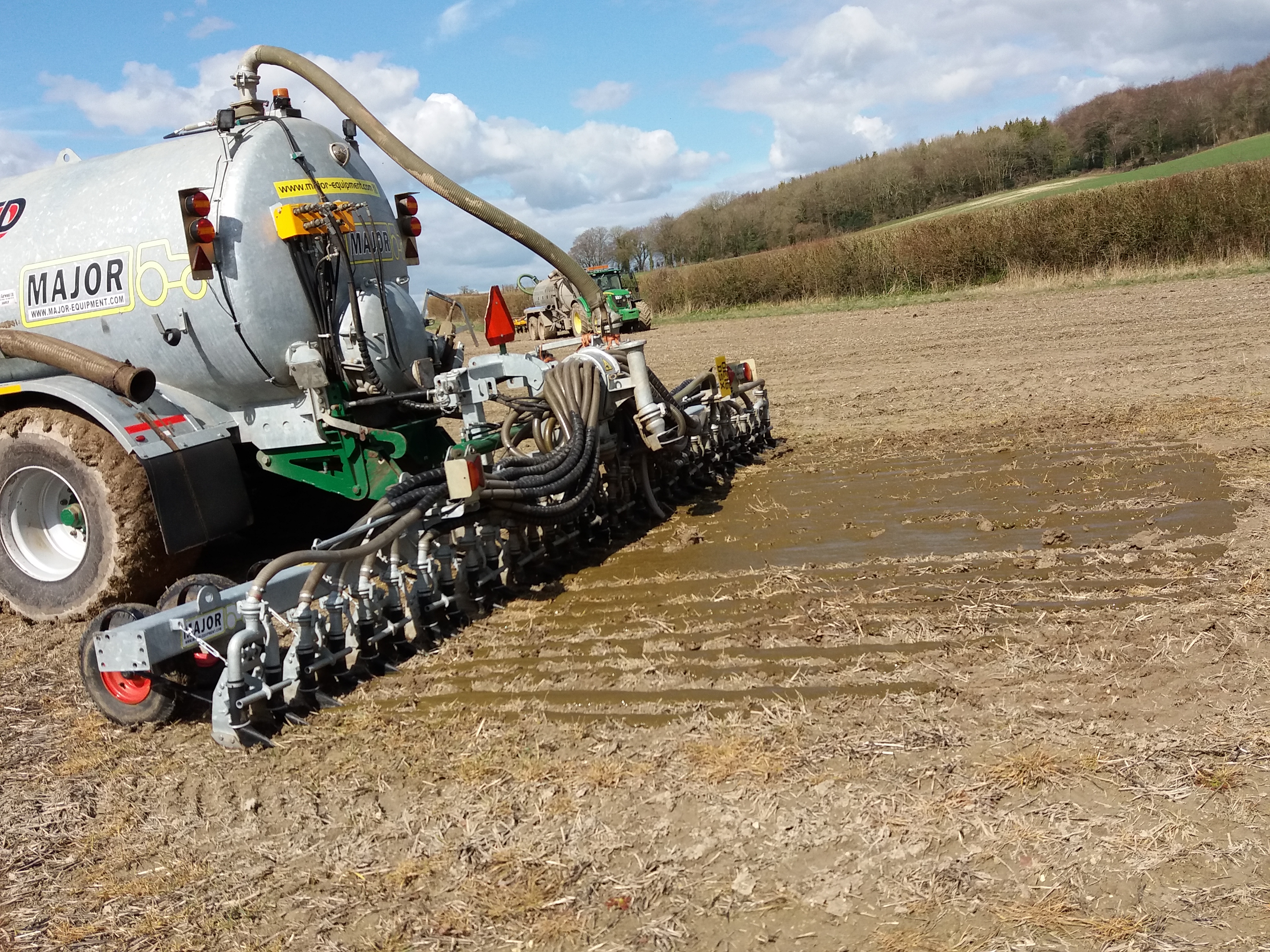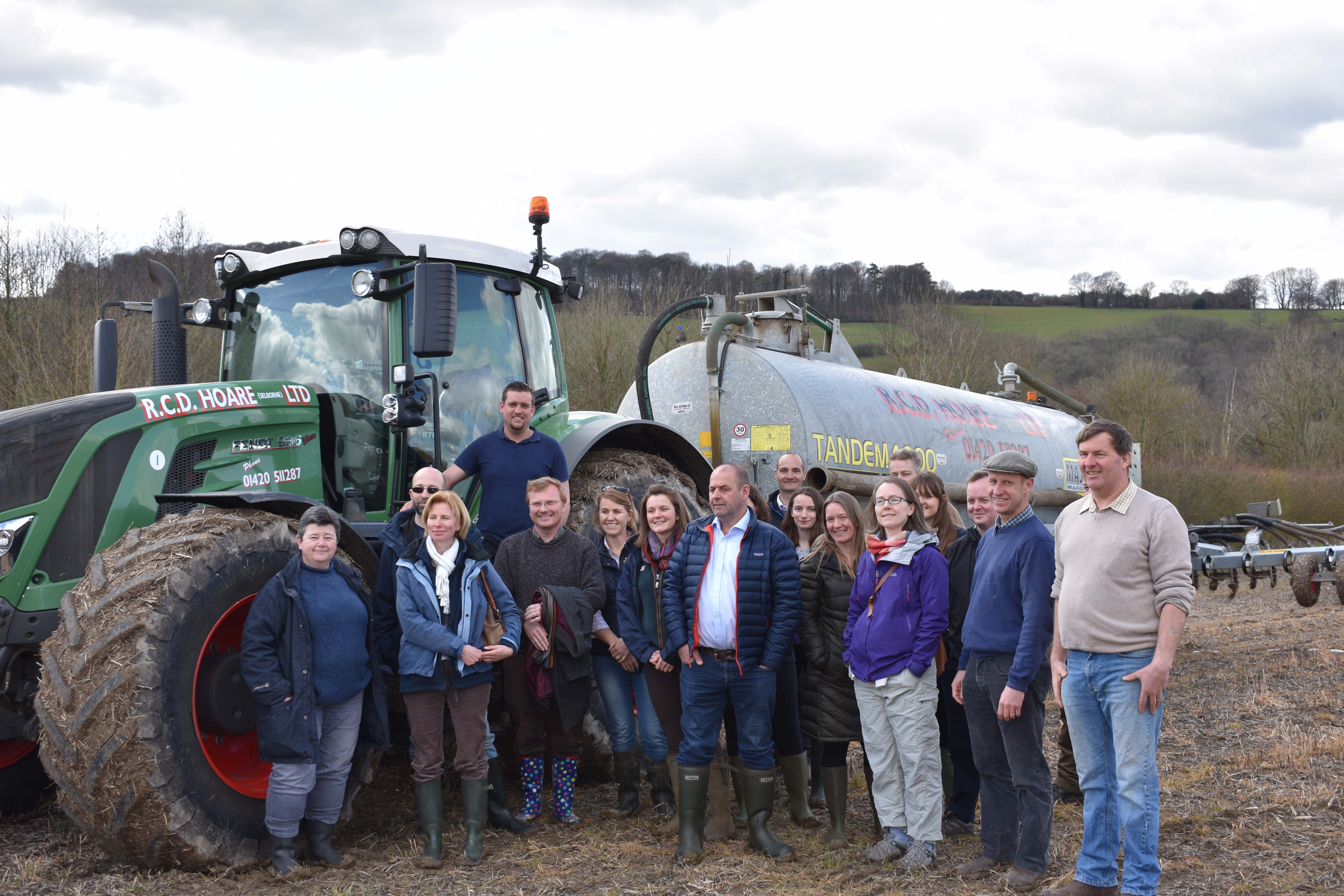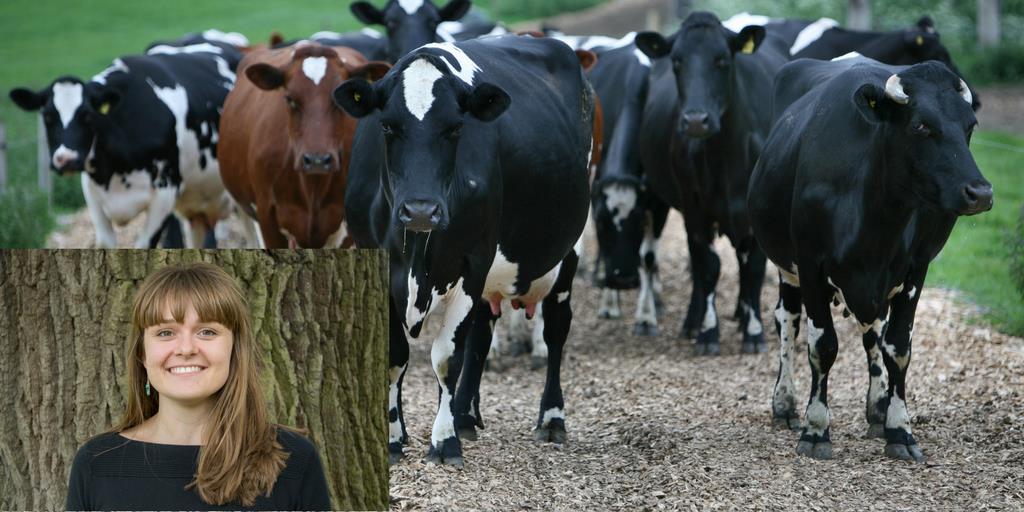The clouds parted and the sun shone as the Defra Air Quality team, including several senior Directors, made their way to the Meon Valley in the heart of the South Downs National Park where NFU South East Dairy Board Chairman Jamie Butler and his brother Will run a herd of 450 Holstein-Friesian cows.
With government due to release their Clean Air Strategy later this year and Defra currently putting together a Code of Good Agricultural Practice for Reducing Ammonia Emissions, focus on agricultural emissions, which according to the National Atmospheric Emissions Inventory are responsible for over 80% of ammonia emissions in the UK, has strengthened.
The day was an opportunity to highlight the challenges facing farmers when it comes to reducing emissions and to demonstrate the need for any future agricultural policy on ammonia to have on-farm practicality at its core.
A recent meeting of the Dairy Environmental Issues Group on ammonia called for a more integrated approach to management and solutions. To this end the day included a demonstration and discussion of the reasoning behind herd management decisions at Whitewool Farm, including a focus on feed and nutrition, cattle housing, slurry storage and spreading.
This was done so attendees were able to understand the thought process behind why a dairy farmer might decide to include more protein in feed rations, scrape down cattle sheds twice a day or use sand to bed cubicles; decisions which are rarely made with ammonia emissions in mind but which do contribute to the overall level of emissions emitted on farm.
The day included a demonstration of different types of low emission slurry spreading technology. The farm itself uses an umbilical cord to spread slurry and two local contractors were invited to demonstrate trailing shoe and slurry injection techniques. Whilst these spreading techniques do have the advantage of reducing the level of emissions emitted into the atmosphere they can also have practical advantages. Injecting slurry for instance can lead to longer grazing periods as the length of time you have to wait to graze the land is reduced. Whilst the cost of the kit can be a restraint there is currently funding available through the RDPE Countryside Productivity Scheme for slurry spreading equipment.

What became clear as the day progressed was that if the UK wants to achieve its 2020 and 2030 emissions targets, which we are not currently expected to do, farmers need support to help invest in their businesses and develop management practices which improve the overall productivity and profitability of the farm business whilst delivering environmental benefits.
Support to update or expand farm infrastructure, such as cattle housing or slurry storage capacity, was identified as way to drive environmental improvements whilst easing the day to day practicalities of running a farm business. Currently dairy farms in NVZs are restricted both by the size of their slurry tank and and by having to spread to set calendar dates. If there was support to increase slurry storage capacity and at the same time we moved to a more science-led approach to managing closed periods, for example by measuring temperature or moisture levels, this would prevent unnecessary spreading at inappropriate times which can have a detrimental impact on the environment.
The issues surrounding improving farm infrastructure, such as cost, planning difficulties, taxation and tenancies, were emphasised whilst better knowledge exchange and improvements in data linking farm management practices and emissions were identified as areas for improvement.
Defra’s Command Paper talks about the possibility of redirecting money currently used to fund the Basic Payment Scheme to environmental schemes and pilots. The farm visit highlighted how this money could be used to support farmers to invest in infrastructure, drive regulatory improvements and deliver more robust industry data on emissions. This would not only lead to gains in productivity and improve cattle health and welfare but also deliver environmental benefits, in a win-win situation for all.

